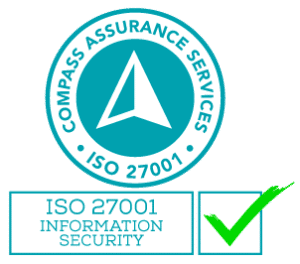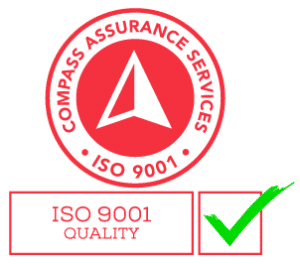Managing an architectural project is no small task. From initial planning to project handover, there are countless moving parts that need to work in harmony. Without a clear roadmap, even the most experienced professionals can face delays, budget overruns, or miscommunications.
This is where an architectural project management checklist becomes indispensable. By breaking down the project into manageable phases with clear action items, you can keep every aspect of your work organised and ensure nothing falls through the cracks.
Whether you’re planning a small residential build or a large-scale commercial development, this checklist will help streamline your project management process, reduce risks, and deliver exceptional results.
Pre-Project Initiation Checklist
Before breaking ground, you must lay a solid foundation for your project. This starting point focuses on aligning expectations, securing essential approvals, and ensuring the project is feasible from both design and construction standpoints.
1. Define Project Goals
- Understand the client’s vision, priorities, and expectations.
- Set clear project objectives, including scope, budget, and timeline constraints.
- Identify key project deliverables, such as design drafts, cost estimates, and finalised plans.
2. Identify Stakeholders
- Create a comprehensive list of all parties involved:
- Client(s)
- Architects and design consultants
- Engineers and contractors
- Regulatory bodies or council representatives
- Assign roles and responsibilities to ensure accountability across the team.
3. Conduct a Feasibility Study
- Assess site conditions, including zoning, topography, and utilities.
- Confirm compliance with local regulations, including building codes and land-use policies.
- Identify potential risks, such as environmental concerns or legal restrictions.
4. Secure Initial Documentation
- Formalise agreements with the client, including contracts and payment terms.
- Obtain necessary permits or pre-approvals from local authorities.
- Establish a record-keeping system for all documents to maintain organisation throughout the project.
Planning and Design Phase Checklist
The planning and design phase is where the project begins to take shape. Clear communication plans, meticulous organisation, and thorough documentation are key to turning the client’s vision into actionable plans.
1. Concept Development
- Collaborate with the client to refine the project’s vision and design concepts.
- Create schematic designs, including sketches, initial floor plans, and 3D models, to communicate ideas effectively.
- Incorporate feedback and iterate until the client approves a clear design direction.
2. Resource Allocation
- Assemble your project team, ensuring roles are clearly defined:
- Lead architect
- Design consultants (e.g., structural, electrical, and mechanical engineers)
- Project manager
- Secure necessary architecture design tools and management software, such as CAD programs, BIM tools, and project management platforms.
- Budget resources required for both human capital and materials needed during this phase.
3. Regulatory Compliance
- Verify that designs meet all applicable building codes, environmental regulations, and zoning requirements.
- Consult with legal and compliance experts to address complex regulations.
- Prepare and submit documents for required permits.
4. Client Approval Process
- Present finalised design plans to the client for approval.
- Develop a clear feedback mechanism to address revisions efficiently.
- Obtain sign-off on the final design and ensure all parties agree on the next steps.
5. Develop a Detailed Project Plan
- Break the project into milestones with deadlines.
- Create a detailed budget, accounting for contingencies.
- Document everything in a comprehensive project management plan to ensure team alignment.
Execution and Construction Phase Checklist
With the designs finalised, it’s time to bring the project to life. The execution and construction phase requires tight coordination between the project team, contractors, and other stakeholders to ensure the work progresses according to plan.
1. Establish a Clear Project Timeline
- Develop a construction schedule, breaking tasks into daily, weekly, and monthly milestones.
- Factor in contingencies for weather delays, material shortages, or other unexpected issues.
- Share the schedule with all stakeholders to maintain alignment.
2. Implement Communication Protocols
- Set up regular check-ins with the project team, contractors, and clients.
- Use collaboration tools to centralise communication and keep everyone updated on progress.
- Document all changes or decisions made during meetings to avoid miscommunication.
3. Monitor Progress Regularly
- Conduct routine site visits to track construction progress against the schedule.
- Use project management software to update stakeholders with real-time data.
- Address issues promptly, whether they involve design changes, material substitutions, or construction delays.
4. Quality Control and Safety
- Implement a quality assurance process to verify that construction aligns with the approved plans.
- Ensure all workers adhere to safety regulations and wear appropriate personal protective equipment (PPE).
- Conduct regular safety audits to identify and address potential hazards.
5. Manage Scope Changes Effectively
- Develop a protocol for managing change requests from the client or other stakeholders.
- Assess the impact of each change on the timeline and budget before approval.
- Document all approved changes and communicate updates to the team.
Closing and Handover Phase Checklist
The closing and handover phase is the final stage of the project, where all the hard work culminates in delivering the finished product to the client. This phase focuses on final inspections, documentation, and ensuring client satisfaction.
1. Conduct Final Inspections
- Schedule a walkthrough with the client and key stakeholders.
- Use a punch list to identify any remaining tasks, such as touch-ups or corrections.
- Address and resolve all items on the punch list promptly before handover.
2. Ensure Compliance and Certification
- Confirm that the project meets all regulatory requirements and industry standards.
- Obtain necessary completion certificates, such as occupancy permits or safety certifications.
- Conduct a final safety audit to ensure the site is hazard-free.
3. Deliver Project Documentation
- Provide the client with a comprehensive handover package, including:
- Maintenance manuals and warranties.
- Finalised design plans and specifications.
- Permits and regulatory documents.
- Organise and archive all project files for future reference.
4. Conduct a Post-Project Review
- Gather feedback from the client to evaluate their satisfaction and identify areas for improvement.
- Conduct a team debrief to review lessons learned and refine internal processes.
- Document the outcomes of the review for use in future projects.
Architectural Project Management Tools and Technologies
Technology plays a vital role in modern architectural project management, helping teams stay organised, communicate effectively, and track progress in real time. The right tools can enhance every phase of your project.
1. Building Information Modelling (BIM) Tools
- Use BIM software for 3D modelling, clash detection, and detailed construction planning.
- Examples: Autodesk Revit, ArchiCAD, or Vectorworks.
2. Project Management Software
- Centralise task management, schedules, and team collaboration in a single platform.
- Examples: Trello, Asana, or Monday.com for simpler workflows, and Primavera or Procore for complex projects.
3. Communication and Collaboration Platforms
- Ensure consistent, reliable communication with team members and clients through platforms like Microsoft Teams or Slack.
- Use cloud storage solutions like Dropbox or Google Drive for easy file sharing and access.
4. Time Tracking and Cost Management Tools
- Monitor project budgets and timelines in real time.
- Examples: Harvest or Clockify for time tracking, and QuickBooks or Xero for financial management.
5. Drone and AI Technology
- Leverage drones for site surveys, progress documentation, and inspections.
- Explore AI-powered tools for predictive scheduling and risk management.
Maintain High Quality of Your Architectural Project with Expert Support
Managing an architectural project is a multifaceted task, but a clear checklist and the right tools can turn complex management processes into manageable steps. By following the structured phases outlined in this guide, you can minimise risks, save time, and exceed client expectations.
At Steadfast Solutions, we specialise in providing IT tools and technology solutions tailored to architectural projects. From implementing project management software to supporting collaboration platforms, our expert team will help you stay organised, efficient, and focused on delivering exceptional results.




